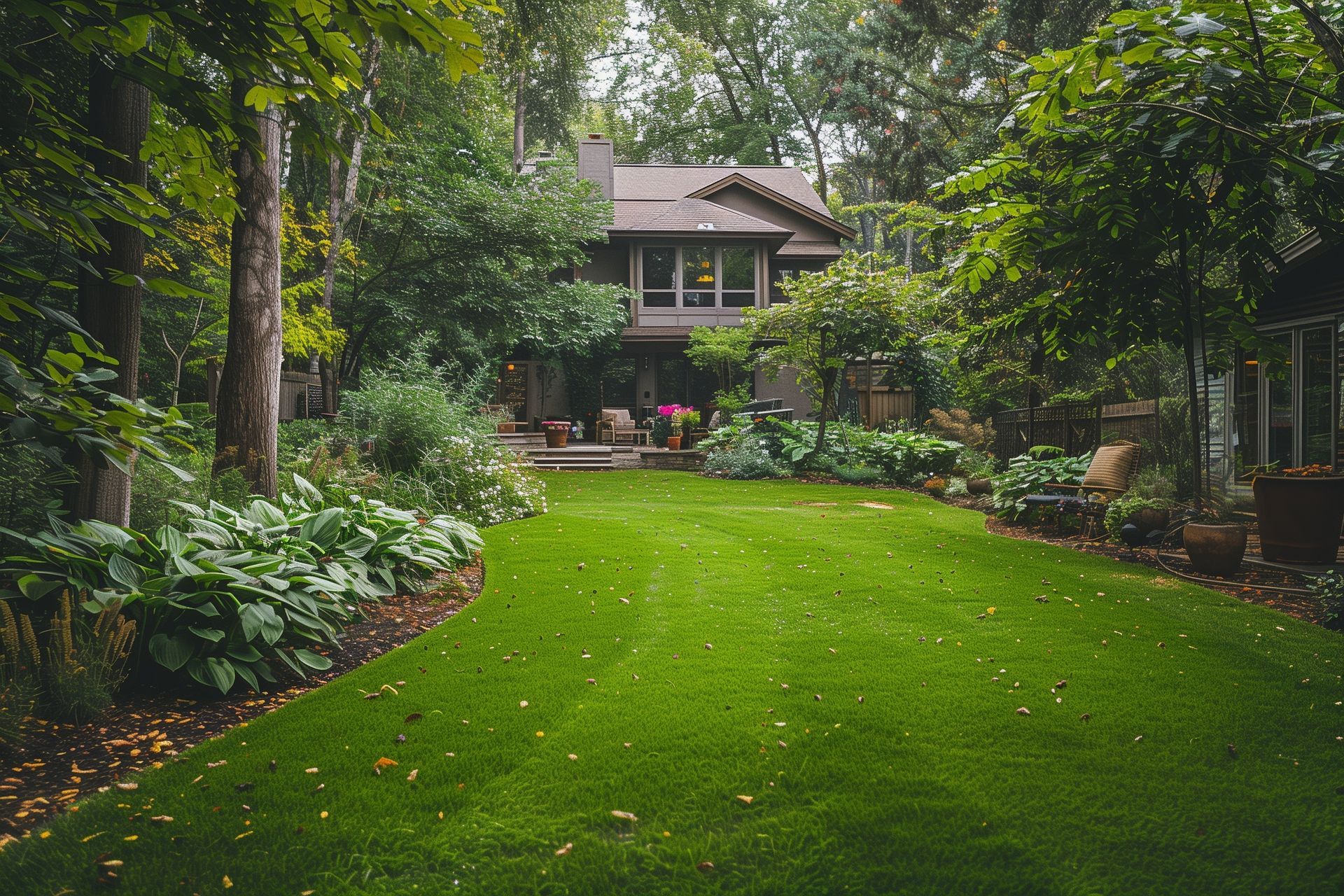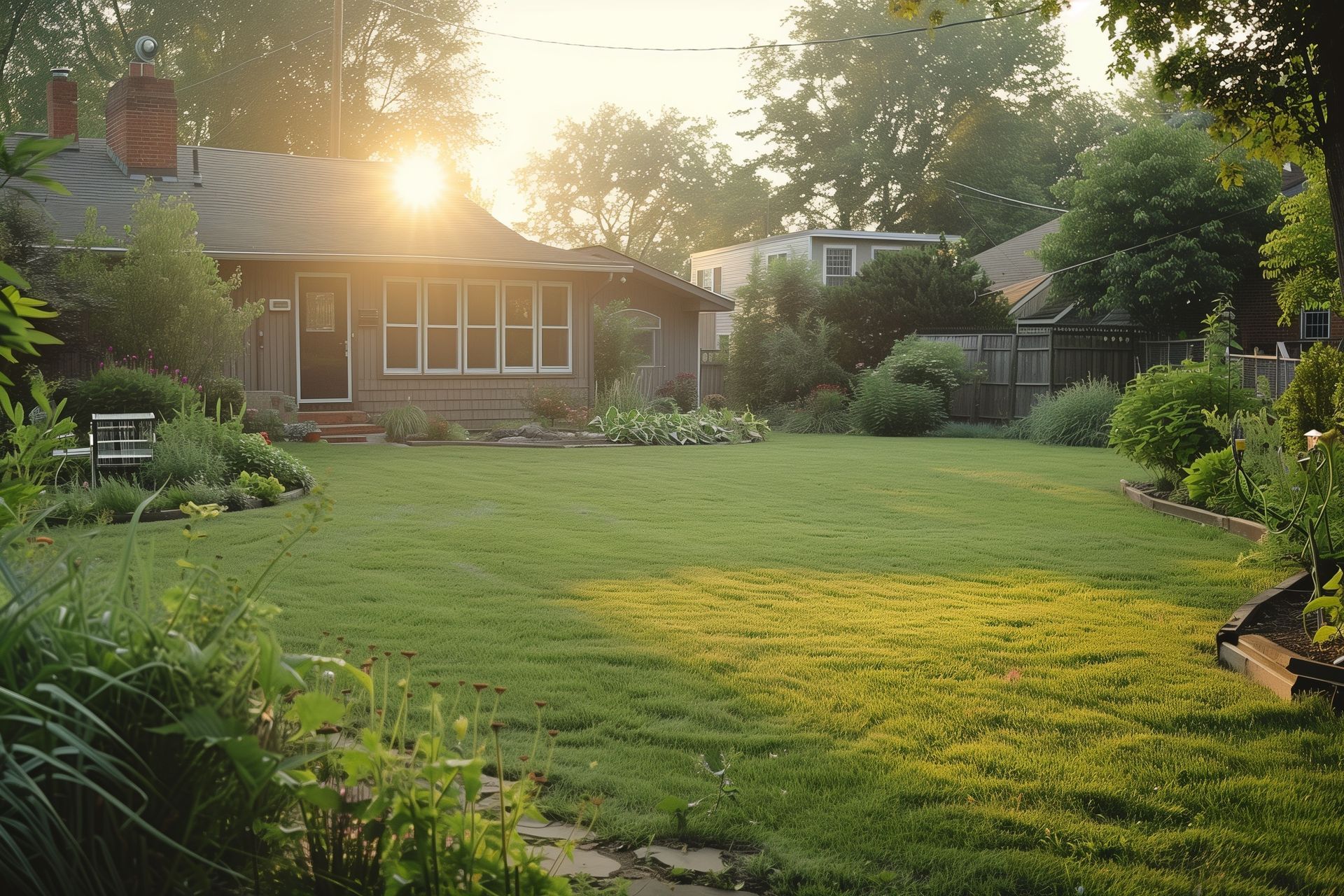Grading Solutions That Save Plymouth Lawns
Grading Solutions
Most drainage problems I see in Plymouth start with one simple mistake: the grade is off. I’ve been called to fix yards where homeowners have already tried everything—French drains, longer downspouts, new sod—but the problem wasn’t the system, it was the slope. If the grade doesn’t carry water away from the house, you’re fighting an uphill battle, literally.
Grading is the first line of defense against water damage, soggy lawns, and cracked patios. It’s the foundation of a healthy landscape, and when it’s wrong, nothing else performs the way it should. The truth is, many companies just eyeball slope, and that’s where long-term problems start.
This article explains what makes precise grading essential for Plymouth properties, why trained crews and the right tools matter, how regrading restores lawns over time, and what to look for when you want the job done right.
Why Grading Comes Before Everything Else
Grading is what sets the stage for every other part of your landscape to work correctly. I’ve seen homeowners spend thousands installing drains and sump pumps to fix pooling water, only to find the water still runs straight back toward their foundation. The issue isn’t bad luck—it’s bad grading.
The purpose of grading is simple: move water away from your house and keep it from sitting where it doesn’t belong. But in Plymouth, with its heavy clay soils, that’s easier said than done. Clay holds water, and even a small low spot can turn into a muddy pit that never really dries out.
A good grade creates a subtle slope—usually about one to two percent—that guides water naturally away from structures and into proper drainage routes. It doesn’t need to look like a hill; it just needs to be consistent. That’s why “eyeballing” doesn’t cut it. A slope that looks fine to the naked eye can actually be tilted in the wrong direction.
When a property’s grade is off, the problems multiply. You’ll see:
- Water pooling near foundations or patios
- Mushy lawns that stay wet days after rain
- Patios or walkways that heave or settle unevenly
- Sump pumps that run constantly because groundwater is always being pushed toward the house
In neighborhoods around Medicine Lake and Gleason Lake, these issues are especially common. Those areas tend to have mixed elevations and dense clay subsoils, which means water doesn’t drain through the ground easily. Without the right slope, water stays trapped in the top few inches of soil—just enough to cause trouble.
Proper grading prevents all that. It makes lawns usable, keeps basements dry, and extends the life of patios, retaining walls, and driveways. Think of it as building a foundation under your foundation. Without it, everything else you add will be working twice as hard to do half the job.

How Precision Grading Protects Your Lawn and Foundation
When we handle grading, we don’t guess. Every adjustment is measured with a transit to check elevation changes across the yard. That’s what ensures the slope is steady from start to finish, with no dips that can collect water later. It’s easy to underestimate how much precision matters until you’ve had a project go wrong because the grade was just half an inch too low.
Our crews use transits throughout the job to verify that what’s designed on paper is exactly what’s built in the yard. The plan comes from our design team, but it’s fieldwork that makes or breaks the result. A perfect plan won’t help if the crew doesn’t execute the slope accurately.
In Plymouth’s clay soil, the margin for error is small. If the grade near your foundation is too flat, water will soak in and push against the basement wall. Too steep, and you’ll end up with erosion that pulls soil—and eventually your lawn—downhill. The right balance lets water run off at a controlled pace, while still keeping the yard usable for mowing, play, and planting.
I’ve seen grading done well enough to protect patios for decades, and I’ve also seen poor jobs fail within a year. The difference is precision and follow-through. That’s why we double-check slope with elevation readings before calling a project finished.
A proper grade protects more than just your house. It protects everything you invest in afterward: your patio, walkways, retaining walls, and turf. When the slope works right, all those features last longer and look better.
In older Plymouth neighborhoods, settling is a big issue. Over time, the original grade drops in some areas while rising in others. That uneven surface changes how water flows, often creating puddles near homes that didn’t exist before. Restoring that original slope can make a dramatic difference.
If you’re noticing water near your foundation, or if your lawn feels spongy underfoot days after a storm, grading is often the fix. It’s not glamorous work, but it’s the kind that keeps everything else standing straight.

Regrading: Fixing What Time and Weather Change
Even a well-graded yard doesn’t stay perfect forever. Soils shift, settle, and erode. Freeze-thaw cycles move soil particles just enough to create dips where water can sit. Over years, those small changes add up.
I often meet Plymouth homeowners who tell me their yard used to drain fine but now collects puddles every spring. That’s usually not their imagination—it’s their lawn slowly changing shape over time.
Erosion from rain, clippings, or new landscaping can fill in swales and flatten areas that used to carry water away. New construction nearby can also throw things off. If a neighbor builds an addition or regrades their property without considering water flow, it can redirect runoff right toward your lawn.
Regrading brings the slope back to where it should be. We start by identifying the low points and understanding where the water needs to go. Then we use transits to calculate a new, steady slope that sends water toward safe drainage points, not toward structures.
When needed, regrading can be paired with solutions like French drains or drain tile for extra protection. For example, in heavy clay areas, we’ll often install perforated pipe below ground to carry away excess water once it reaches those low-point channels. But grading always comes first.
One key part of regrading is securing the soil right after the work is done. We use sod or seed blankets immediately to prevent erosion. Leaving bare soil exposed, even for a few days, can undo weeks of careful work.
I’ve seen the difference regrading can make. A homeowner near Parker’s Lake had what they thought was a drainage issue under their deck. Turns out, the grade had settled about four inches over the years. After regrading, the yard stayed dry through three straight spring thaws.
If you’re tired of dealing with soggy spots or seeing water head straight for your foundation, regrading is the long-term fix. It’s not just about appearance—it’s about reclaiming your lawn and protecting your property for years to come.
Doing It Right the First Time
There’s no substitute for experience when it comes to grading. I’ve seen companies try to cut corners by “eyeballing” slope or skipping elevation checks. The results always show up later—cracked patios, uneven lawns, or water pooling in spots that should be dry.
Our team is trained to grade precisely because it’s the base that supports everything else we build. We use transits to measure slope changes throughout the job, and we don’t stop checking until it’s right. Every project starts with a clear drainage plan designed by our in-house team, then verified on site by our foremen.
The goal isn’t just to move water away; it’s to do it in a way that keeps the yard usable. You should be able to walk, mow, and enjoy your space without feeling like you’re on a tilt. That’s where precision grading matters most—balancing drainage performance with everyday function.
Once the grading is finished, we secure the soil with sod or seed blanket immediately. That step keeps erosion from undoing the slope and helps the new grade settle naturally. We also recommend re-evaluating the grade every few years, especially if you notice water flow changing after new construction nearby.
In the Wayzata School District area, where new homes are still being built, I’ve seen older properties suddenly develop drainage issues because neighboring lots were regraded differently. Keeping an eye on how water moves across your property line can help you catch these problems early.
Professional grading isn’t just a one-time fix—it’s an investment in the long-term health of your landscape. When done right, it prevents structural issues, protects your foundation, and creates a lawn that stays firm and functional season after season.
dr
FAQs
How can I tell if my lawn in Plymouth needs regrading?
If you see water pooling near your house, soggy areas that never dry, or slopes that seem to run toward the foundation, your grade may be off. In Plymouth, clay soils make these issues worse because they don’t let water soak in easily. Walk your yard after a rain—if you can see or feel dips, or if your sump pump runs more often than usual, it’s time to have a professional evaluate your grading.
Is grading more important than installing drains or tile?
Yes, grading comes first. Without proper slope, drains and tiles can’t perform as intended. They may even make the problem worse by holding water where it shouldn’t be. A good grade ensures that water moves naturally away from the home, reducing the load on any underground drainage systems. Once grading is correct, drains can be added strategically to handle remaining low spots.
How long does a grading project take?
Most grading projects take between two and five days, depending on yard size, soil type, and how much rework is needed. Clay soil can take longer because it compacts tightly and requires more shaping to achieve a steady slope. After grading, it’s important to install sod or seed quickly so the soil doesn’t erode or shift before vegetation takes hold.
What’s the ideal slope for good drainage without making the yard too steep?
A slope of about one to two percent—roughly one to two feet of drop per hundred feet of distance—is ideal for most Plymouth lawns. That’s enough to move water efficiently without making the yard uncomfortable to walk or mow. Our transits help us hit that balance precisely, ensuring the yard looks natural while draining effectively.
Can grading fix soggy areas and protect my patio or foundation long-term?
Absolutely. Proper grading redirects water flow, keeps the subsoils under your patio and foundation dry, and prevents frost heave or cracking. When paired with strong turf or sod, the new slope creates a durable surface that resists erosion and compaction. In Plymouth’s heavy clay soils, that’s the single most effective way to ensure your outdoor spaces stay dry and usable.










